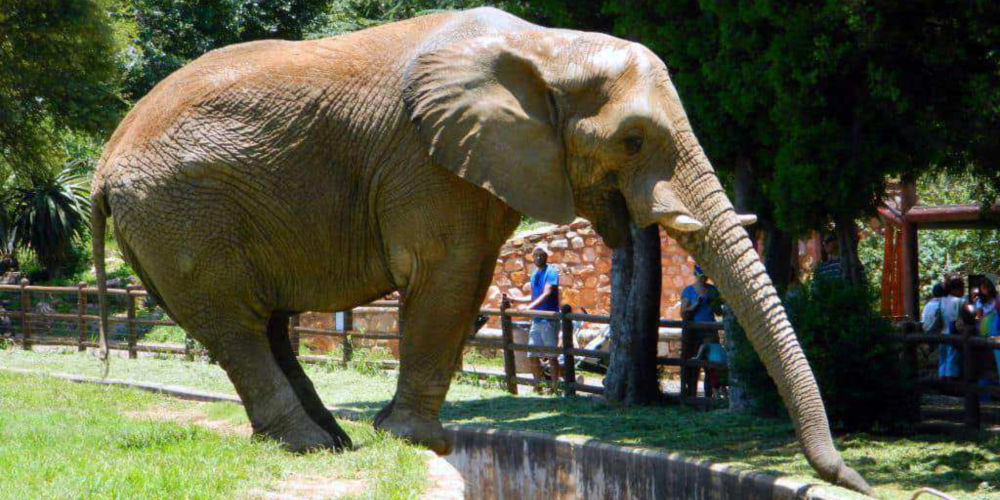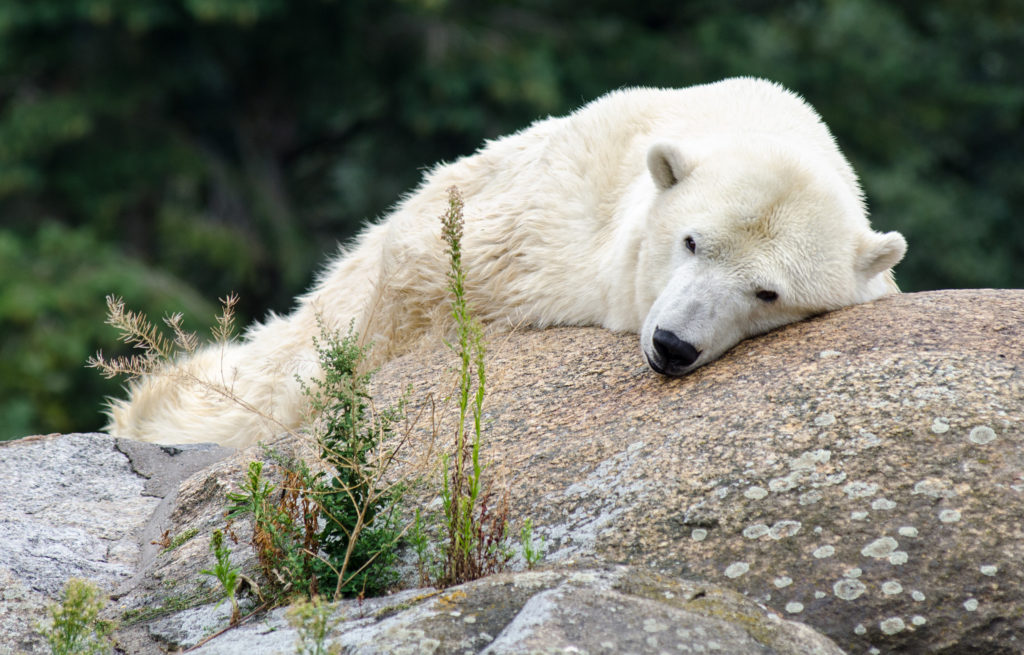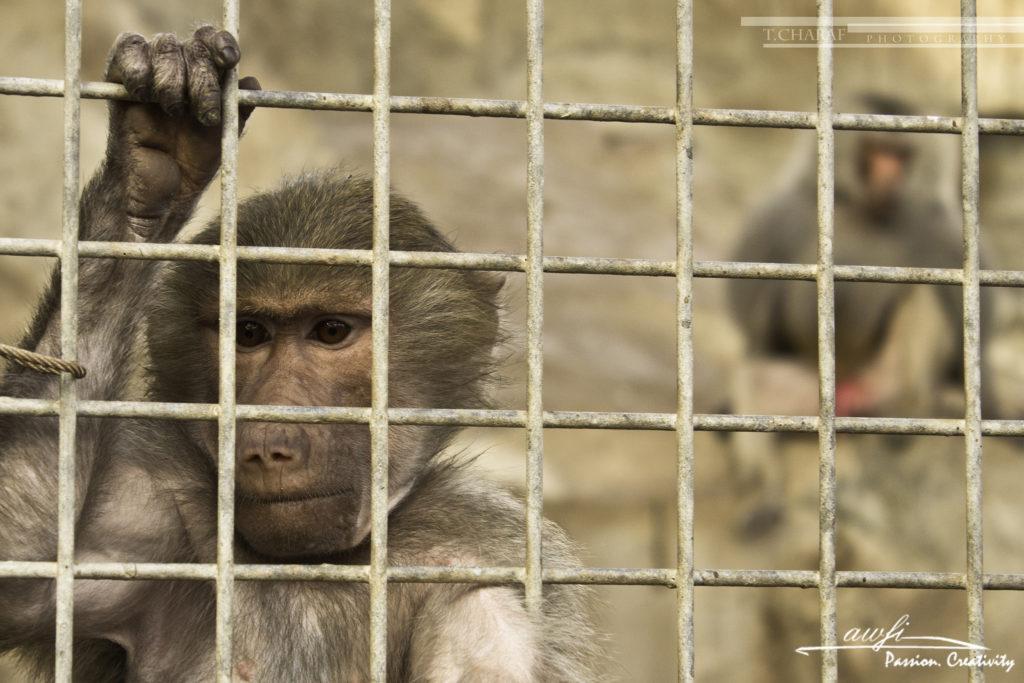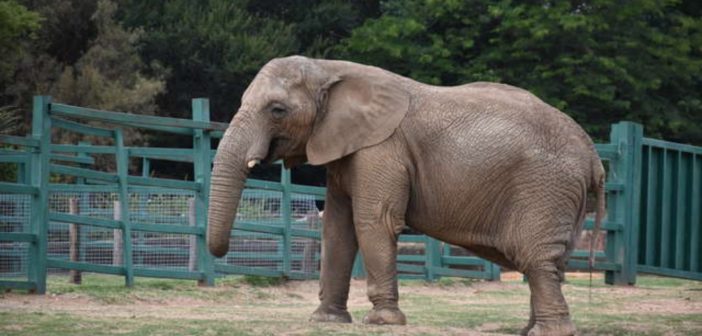Written by Don Pinnock
We need to talk about the future of zoos. There are about 1,500 formal and many more informal zoos in the world, holding between three and four million undomesticated, non-human creatures, displayed for our curiosity and amusement. It’s fair to ask: to what end?
In a world of rapidly shrinking wild biomes, ecological collapse and rising extinction, there are two questions that need to be asked of these ubiquitous but strange institutions. What is the conservation value to the species confined in zoos, and are the conditions under which they are held conducive to their physical and psychological well-being?
At great cost to themselves, we’re forcing zoo animals to be wild ambassadors and live in captivity. If they’re cared for, well fed, safe and able to socially interact in extensive enclosures, and their presence serves to support the survival of their wild cousins, their confinement may be justifiable. If these outcomes are not in place, and they seldom are, zoos are simply exploitation for profit.
Zoos certainly have a checkered history. Originally, zoos were created as private royal menageries in Egypt, Assyria and China, but in the Roman Empire they became holding pens for brutal public spectacle. The historian William Lecky records that at one time in the Roman Games, a bear and a bull, chained together, rolled in fierce combat across the sand. Four hundred bears were once killed in a single day under the Roman Emperor Caligula. Under Emperor Nero, 400 tigers reportedly fought with bulls and elephants.
In the 16th and 17th centuries, explorers captured and brought home for their benefactors the exotic animals they encountered. Many animals died on the way, but those that survived were placed in menageries, often in the gardens of palaces.
The first zoo as we know it was the London Zoo, founded in 1828. It initially practiced science behind closed doors, but eventually opened to entertain paying guests. Since then zoos have spread across the globe. Most use cages with bars to keep the animals inside and on display. They’re actually a tangible link to a colonial past and reminders of colonial ideas about conquests of distant lands.
This all brings me to Lammie, the lonely elephant at the Johannesburg Zoo. There’s a photograph of her precariously reaching across a deep moat to an outside world she has never known for the 39 years of her life. Once, touching that freedom, she fell into the moat, but was miraculously uninjured but for a broken tusk.

Lammie reaches across the moat separating her from the outside world. Image via Conservation Action Trust.
She’s the last of her known family and lonely, living at the zoo in a treeless enclosure with minimal water under the unremitting gaze of human visitors. In 2018 her only companion, Kinkel, died of colic and from eating sand. Lammie spends most of her days against the wall of her enclosure, in the only shady spot, where she stands doing almost nothing, a sign of boredom and probably depression.
Humane Society International-Africa, the EMS Foundation, Ban Animal Trading and the Elephant Reintegration Trust have joined forces to try to persuade the zoo to move her to a rewilding sanctuary. They offered to pay for the translocation. The zoo’s response was that Lammie couldn’t be moved, “as she was born at the zoo and has lived her whole life in this environment.” They also stated that she was there to “educate the less privileged to understand our natural environment.”
A former director of the zoo, Dr Pat Condy, gave a rather different take on the reason for exhibits like Lammie. He told Out There magazine, “We are in the family recreation business. The zoo is competing with places like the Randburg Waterfront and the Bruma Lake Flea Market.”
The four NGOs pointed out that a single elephant standing doing nothing has no educational value and, furthermore, that there was no adequate environmental enrichment for Lammie or decent shade in her enclosure. A study the organisations undertook found that few people spend more than three minutes at Lammie’s enclosure. There is also no information posted there about elephant behavior, or about the plight of elephants, who are being poached in Africa at the rate of one every 15 minutes. Johannesburg Zoo marketing manager Jenny Moodley agreed that more signage and educational input was needed, but said there was unfortunately only one education officer.
In a letter to the zoo, the NGOs noted that “there are numerous examples of ex-captive elephants being successfully reintegrated into the wild. Therefore, the argument that Lammie is required to be kept captive because she is zoo-born is extremely weak. Lammie is and will always be a wild animal, and as such should be afforded the dignity and opportunity to live the remainder of her life in a natural state.”
In a rebuttal, Moodley pointed out that when an elephant named Thandora was relocated from Bloemfontein Zoo to Gondwana Game Reserve she died, so moving Lammie could pose a danger. Gondwana Game Reserve owner Mark Rutherford agreed that relocation of single elephants can be tricky and requires careful management, and pointed out that Thandora probably died from eating something that poisoned her. But, he said, by first pairing elephants and then releasing them, relocation is perfectly possible.
Moodley said the zoo was about to acquire another elephant and expand the enclosure, contradicting previous statements from the zoo that no decision had been taken. South Africa’s National Council of Societies for the Prevention of Cruelty to Animals (NSPCA) has opposed this and threatened legal action, for the states reason that the zoo’s captive environment is detrimental to any elephant’s well-being. The organization has also resigned from the zoo’s Animal Ethics Committee.
“It would be completely irresponsible of the Johannesburg Zoo to continue to deprive elephants of a good life,” said Karen Trendler, the NSPCA’s trade and trafficking portfolio manager. “Experts have said that captive elephants should be kept in social groups of no less than four elephants — something the Johannesburg Zoo is not equipped for. The NSPCA believes that moving Lammie to an approved sanctuary would be far more beneficial for her welfare and would end the cycle of more elephants being doomed to a life of captivity.”
Lammie’s situation highlights the need for a wider discussion about zoos and the wild animals confined within them. Non-human animals have been found to display a range of emotions, among them fear, sadness, happiness, playfulness and curiosity. They’re sentient in the fullest meaning of the word. At a time when scientists know more than ever about the inner lives of animals and when concerns about animal rights loom large, many experts think that zoos need a major overhaul if they are to survive.

A lethargic polar bear at the Berlin Zoo. It’s time to ask hard questions about what purpose zoos serve. Image credit Alan Bloom, CC BY-SA 3.0.
There are zoos that do important scientific and conservation work, but most do not. Very often even the science done only concerns animals in captivity. Zoos can be very good at manipulating language to legitimize their existence: captivity becomes “preservation” and entertainment becomes “education”.
Writing in Time Magazine, environmental journalist Justin Worland asked the obvious question: given new insights into how animals may suffer from anxiety and depression when they’re removed from nature, should they be held in captivity?
According to Barbara King, a biological anthropologist who wrote the book How Animals Grieve, “The vast amount of breeding that goes on in accredited zoos is to keep animals in the zoos. In other words, we’re breeding gorillas so there are more gorillas in zoos and so forth. So it’s very much of a self-perpetuating cycle.”
King goes on to say that it’s time to start thinking about tipping the ratio towards sanctuaries: “Zoos are said to have conservation and education functions, but their main goal, their main purpose, is human entertainment. There are alternatives. The role of zoos has to evolve to work with sanctuaries, with wild places. Many zoos are letting their elephants go to sanctuaries.”
If longevity is a yardstick, zoos are not good for elephants. In captivity, their lifespan is far shorter than their normal 70 years in the wild. More than half of the 76 elephants who have died at Association of Zoos and Aquariums-accredited facilities in the United States since 2000 never even reached the age of 40. A report published in The Seattle Times by Michael Berens on the fate of elephants in American zoos showed that infant mortality for elephants in zoos is almost three times the rate in the wild, and that for every surviving elephant born in a zoo, on average another two die.
Welfare is another issue. According to US zoo planner David Hancocks, zoos create exhibits to put animals on show, but they aren’t designed for the welfare of the animals. Marc Beckoff, an ecology professor at the University of Colorado, Boulder, agrees: “Zoos are a part of the money-driven animal-industrial complex…the animals are often used as breeding machines, like dogs in puppy mills. And thousands of healthy animals are ‘zoothanised’ each year [because of over-breeding]. Even studies conducted by zoos themselves fail to produce evidence that zoo attendance translates into meaningful conservation action.”
A counter-argument is that, if it wasn’t for zoos, most people wouldn’t even know that these animals exist. Could you mobilize preservation efforts for something people don’t even know about? One answer is informative television; an even better idea suggested by zoo designer Jon Coe would be virtual reality immersion.
Whatever the level of visitor engagement, zoos are not about to disappear because of animal rights concerns. So if they’re going to be around, there needs to be public pressure to change their modus operandi. A yardstick could be a “first do no harm” principle, ensuring that compassion and individual welfare are at the heart of zoo construction and animal keeping. We need to ask about the cost to the animals themselves. And how can we use human curiosity to kick-start empathy and conservation of wild creatures and places? How can the animals teach visitors to be better planetary citizens?

A monkey looks out from a cage at Doha Zoo in Qatar. What would a zoo run under the “do no harm” principle look like? Image credit tnts3000, CC BY-SA 3.0.
A “do no harm” principle, however, puts elephants beyond the capability of zoos, something that zoo management is increasingly acknowledging. Since 2000, 37 zoos in Europe have closed their elephant exhibits, including London Zoo in Regent’s Park, because they could not provide appropriate facilities for such large, far-roaming, intelligent animals.
According to Audrey Delsink of Humane Society International-Africa, these zoos acknowledged that, as a species, elephants fare very poorly in zoo exhibits, which cannot meet their social and physiological needs. Excluding elephants, she says, “is exemplary and the ethical, correct and responsible approach”.
Meanwhile, the future of Lammie, Johannesburg Zoo’s lonely elephant, hangs in the balance. She has lost both her parents, all her siblings, a calf (who died) and her partner. Her present behavior displays all the marks of deep sadness. She’s a social animal deprived of a society. Neither the zoo nor her presence there provides any insight into the intricate lives, intelligence, communication abilities, emotions or calf-caring abilities of elephants. It carries no conservation message. She’s there simply because, in outdated thinking, what’s a zoo without an elephant?
True compassionate conservation would be to transport her to a caring facility with space to move and the company of other elephants — a feeling shared by the around 317,000 signatories to Free Lammie petitions doing the rounds. It would be the right thing to do.
On Saturday, February 9, 2019, Ban Animal Trading will hold a Free Lammie protest, starting at 11 AM on the corner of Jan Smuts Avenue and Upper Park Drive in Johannesburg, South Africa.
Featured image: Lammie in the enclosure she has never left at the Johannesburg Zoo. Image via Conservation Action Trust.





